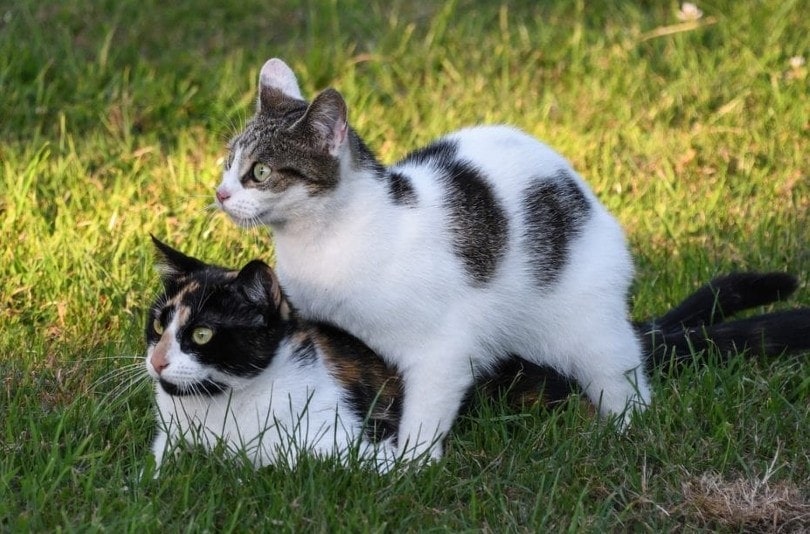6 Homemade Cat Urine Cleaner Recipes (Enzyme Cleaners)

Updated on
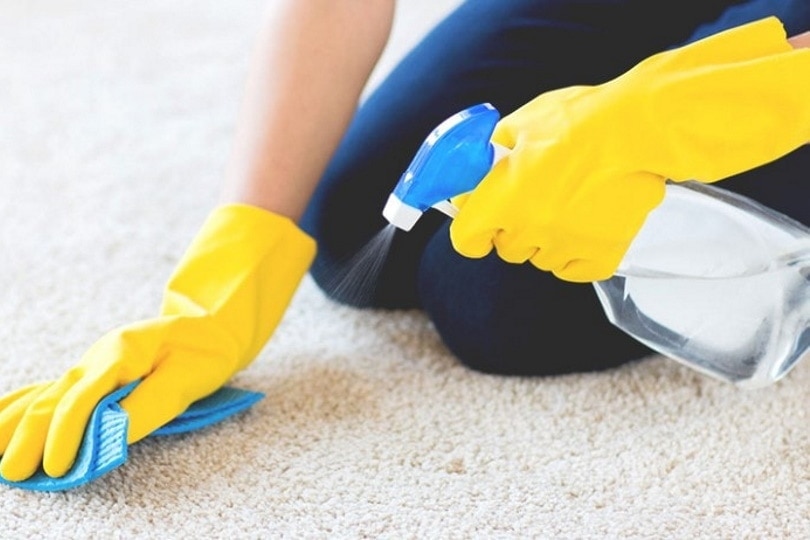
Enzymatic cleaners are popular with pet owners for removing stains and odors caused by cat urine and other pet messes like feces and vomit. Do you have to buy an enzyme cleaning product, or can you make your own? Enzymatic cleaners 1 contain natural ingredients that break down and consume the components of organic pet messes like urine. You can make a homemade enzyme-type cleaner for cat urine and other pet messes with a few simple ingredients.
Here are a few recipes for homemade cat urine cleaners that you can try.
The 6 Cat Urine Cleaner Recipes
1. Vinegar and water
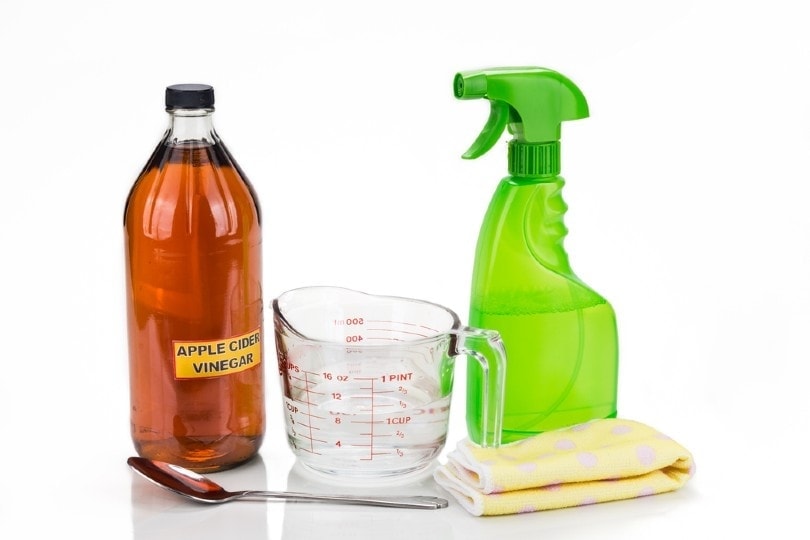
- 3 parts vinegar to 1 part water
- Spray bottle
- Cloths
Instructions:
Blot the stain with a cloth. Mix vinegar and water in a spray bottle and spray the affected area. Cover with a clean cloth and let sit overnight. You can weigh down the cloth with something heavy. Repeat this process if necessary and vacuum when dry.
How it works:
Why is vinegar good for cleaning? Vinegar is acetic acid, which is produced by bacteria during the fermentation process. Because it is acidic, vinegar effectively breaks down other substances, including the ones found in cat urine.
2. Baking soda, hydrogen peroxide & dish soap
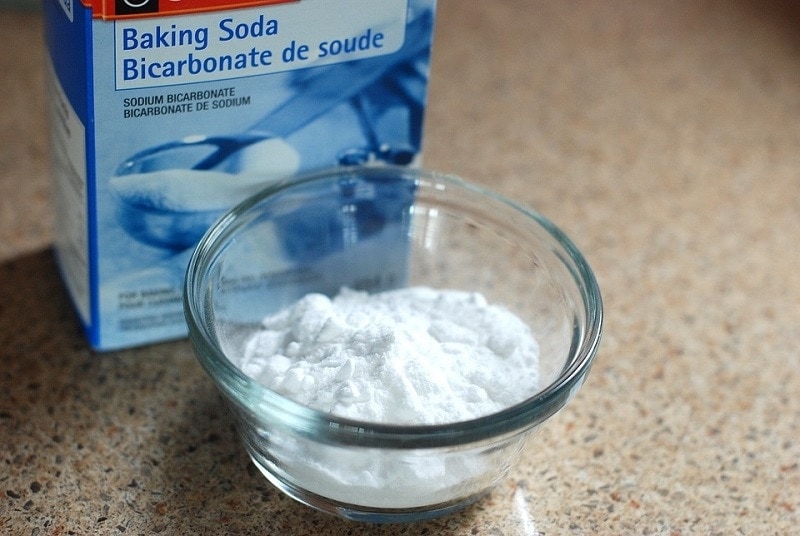
- 2 teaspoons baking soda
- 8 ounces hydrogen peroxide
- 1–2 drops of dish soap
- Spray bottle
Instructions:
Mix baking soda, hydrogen peroxide, and dish soap together. Pour into the spray bottle. Spray onto the stain and allow it to dry. Repeat if necessary.
How it works:
Baking soda and hydrogen peroxide produce bubbles that help to break down stains. Baking soda has the added benefit of odor-neutralizing properties, making it a good choice for cat urine messes.
3. Orange, sugar & yeast
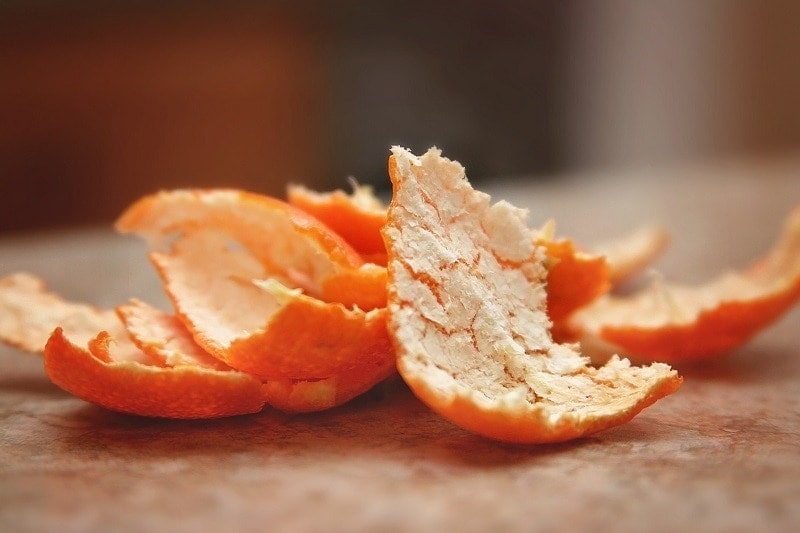
- 10 ounces orange peel
- 4 ounces brown sugar
- 30 ounces water
- 1 teaspoon yeast
- 2-liter soda bottle
Instructions:
This recipe requires 2 weeks of fermentation time. Place all ingredients into the plastic bottle and shake well to mix. Leave the bottle to ferment at room temperature for 2 weeks. Keep it covered, but open it up to release built-up gasses once a day. Strain into another container.
Combine this mixture with water when ready to use. Pour or spray onto the stain. Leave on for 1 hour, then wash off with plain water.
How it works:
The fermentation process helps to create an effective make-ahead enzymatic cleaner. The microorganisms that are produced will go to work breaking down and eating the natural components of the urine. Orange scent can also help remove strong odors.
4. Vinegar, baking soda & water
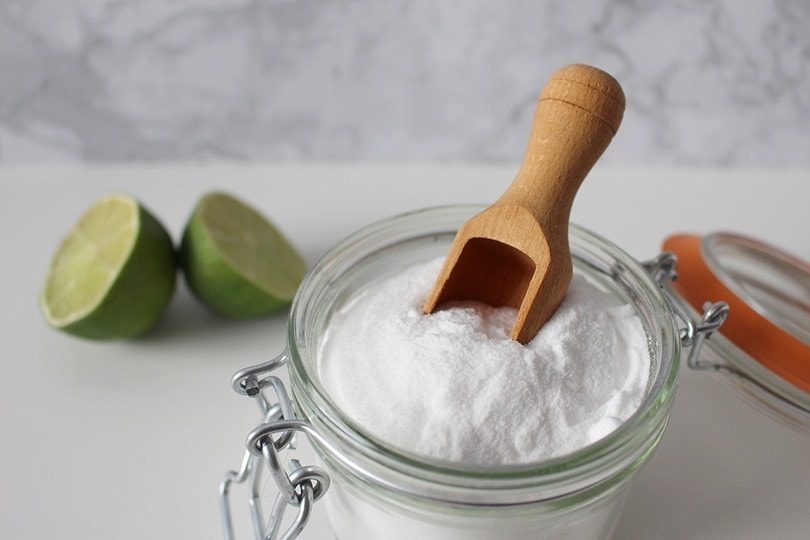
- 1 cup vinegar
- 2 tablespoons baking soda
- ½ cup water
- Cloths
Instructions:
Blot the stain with a dry cloth. Mix the vinegar and baking soda, then add water. Apply the mixture and let it sit for around 15 minutes. Remove the mixture and dry the area with another clean cloth.
How it works:
Vinegar and baking soda are popular in homemade stain and odor removers. They work well together because they both have properties that dissolve organic materials like the ones found in cat urine and other pet messes. The acidic vinegar also helps release carbon dioxide bubbles from the baking soda.
5. Vodka, baking soda & water
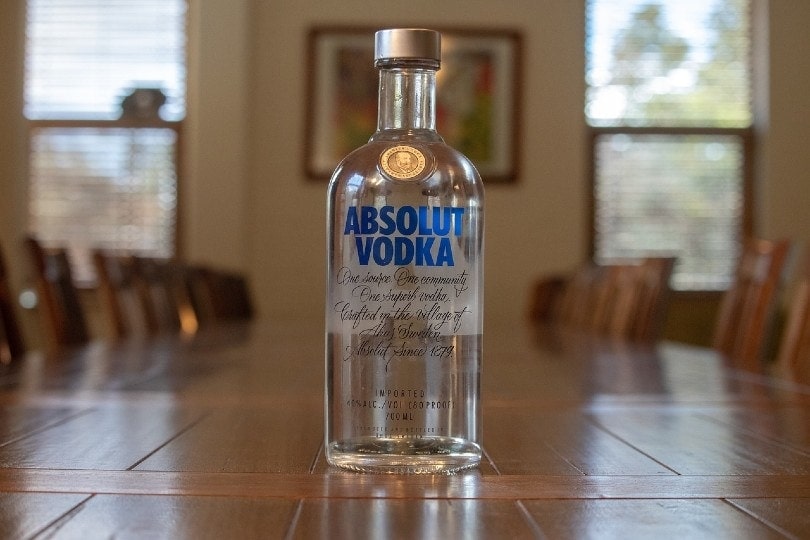
- 1 bottle of vodka
- 2 teaspoons baking soda
- Water
- Cloth
Instructions:
Blot the urine with a cloth. Mix equal amounts of vodka and water in a spray bottle. Spray on the stain and let sit for 15 minutes. Blot with a clean cloth. Sprinkle with the baking soda and vacuum when completely dry.
How it works:
It may seem strange to use vodka to clean stains, but it works as a cleaner as vinegar does, without the vinegar smell. Because it’s alcohol, it is also an effective disinfectant, just like the rubbing alcohol in your medicine cabinet.
6. Mouthwash and water

- 1 part Listerine original mouthwash to 2 parts water
- Spray bottle
- Cloths
Instructions:
Blot stain with a cloth. Mix Listerine with water in a spray bottle and spray on the stain. Let sit for 1 hour and blot with a clean cloth. Repeat if necessary.
How it works:
Mouthwash can make a good cat urine stain and odor remover. The original Listerine was created to be an all-purpose disinfectant and cleaner. You can still use it to clean up pet messes because of its antibacterial and odor-removing properties.
Conclusion
Enzyme-based cleaners can be more effective for organic pet messes than detergents because the ingredients in enzyme cleaners work to break up and remove the organic compounds that are in cat urine and other pet messes. Some of the most popular DIY cat urine cleaners contain familiar homemade cleaning ingredients: vinegar, baking soda, hydrogen peroxide, and water.
You can also try make-ahead enzymatic cleaners that ferment for a few weeks, which allows the microorganisms that eat pet messes to grow and develop. This type of cleaner is most like commercial enzyme-based products. Want to try something different? You can give vodka or mouthwash a try! Both have been used in homemade cleaning solutions for years.
To be safe, make sure to spot-test any cleaner on the material you will be cleaning (carpet, upholstery, etc.) before you apply it to a large area.
Related Reads:
Featured Image Credit: Syda-Productions, Shutterstock




